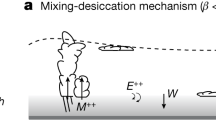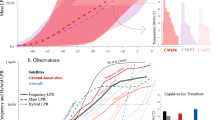Abstract
IN his “Instructions for Observing Clouds” (London, 1888, p. 12), Hon. Ralph Abercromby defines stratus as “a thin uniform layer of cloud at a very low level,” and as an illustration reproduces a photograph of a low sheet of cloud which he says is exceedingly characteristic of east winds in London. In his book “Weather,” p. 48, he shows by a diagram that the position of the stratus is in the south-west quadrant of the anticyclone. By carefully plotting the observations made at the Blue Hill Meteorological Observatory during the past ten years, I find that this type of cloud has the same position in the anticyclones on the eastern coast of the United States that Abercromby found for England. Moreover the continuous records, made by instruments lifted by kites at the Blue Hill Observatory, furnish a very evident explanation of its origin. In a number of cases the recording instruments were lifted into or through such clouds, and in every case the temperature and humidity rose suddenly as the thermograph entered and passed through the stratus-cloud. This rise of temperature is not shown when the thermograph is lifted into cumulus or nimbus clouds. Hence it is evident that the stratus described by Abercromby is found at the plane of meeting between a cold current and a warmer, damp current overflowing it. The cause of the stratus is undoubtedly the mixture between the two currents and the consequent condensation of moisture in the warmer current.
This is a preview of subscription content, access via your institution
Access options
Subscribe to this journal
Receive 51 print issues and online access
$199.00 per year
only $3.90 per issue
Buy this article
- Purchase on SpringerLink
- Instant access to full article PDF
Prices may be subject to local taxes which are calculated during checkout
Similar content being viewed by others
Author information
Authors and Affiliations
Rights and permissions
About this article
Cite this article
CLAYTON, H. The Origin of the Stratus-Cloud, and Some Suggested Changes in the International Methods of Cloud-Measurement. Nature 55, 197–198 (1896). https://doi.org/10.1038/055197b0
Issue date:
DOI: https://doi.org/10.1038/055197b0



